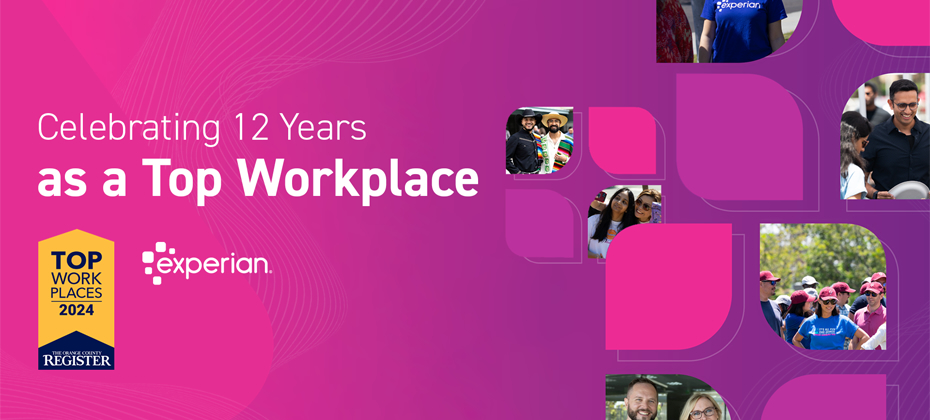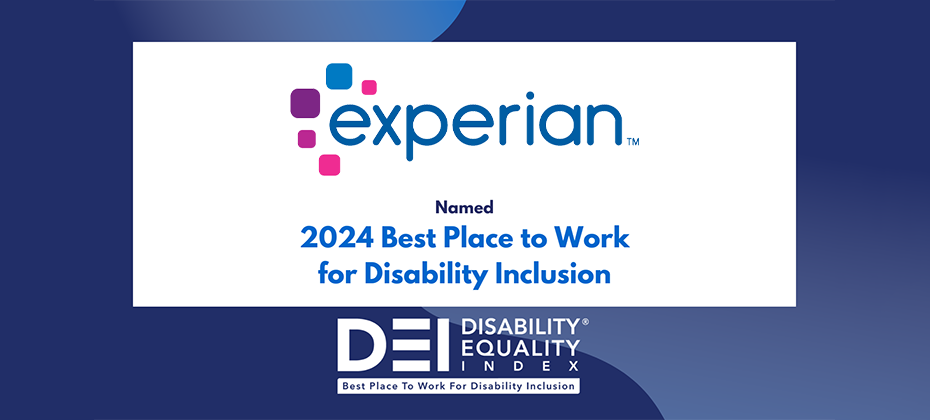At A Glance
At a Glance When an unknown printer took a galley of type and scrambled it to make a type 2ince the 1500s, when an unknown printer took a galley of type and scrambled it to make a type specimen book. It has survived not only five centuries, but also the leap into electronic typesetting, remaining essentially unchanged. It was popularised in the 1960s with the release ince the 1500s, when an unknown printer took a galley of type and scrambled it to make a type specimen book. It has survived not only five centuries, but also the leap into electronic typesetting, remaining essentially unchanged. It was popularised in the 1960s with the releaseince the 1500s, when an unknown printer took a galley of type and scrambled it to make a type specimen book. It has survived not only five centuries, but also the leap into electronic typesetting, remaining essentially unchanged. It was popularised in the 1960s with the releaseince the 1500s, when an unknown printer took a galley of type and scrambled it to make a type specimen book. It has survived not only five centuries, but also the leap into electronic typesetting, remaining essentially unchanged. It was popularised in the 1960s with the releaseince the 1500s, when an unknown printer took a galley of type and scrambled it to make a type specimen book. It has survived not only five centuries, but also the leap into electronic typesetting, remaining essentially unchanged. It was popularised in the 1960s with the release

With rising insurance costs, deductibles and copays, some people struggle to afford the out-of-pocket expense that can come with seeking medical treatment. Because of this, some consumers decide not to seek treatment, which could have negative effects on their health and overall well-being. While it’s true healthcare organizations do provide financial assistance and often have charity programs to help offset the costs, most do not have the financial resources to absorb a substantial increase in patient debt that is being driven by consumers selecting high deductible health insurance plans then not being able to pay. The additional challenge is that many hospitals and healthcare providers do not have the means to quickly and accurately determine which patients qualify for charity programs, which are able to pay for care, and which patients need payment plans to help them soften the blow from an unforeseen healthcare event. To help address the problem, Experian provides hospitals, medical offices and clinics with unique data and analytics to provide insight into each patient’s financial situation. By leveraging healthcare-specific predictive models, Experian enables healthcare organizations to easily and efficiently determine which patients qualify for financial assistance programs. In short, Experian is using its data for good by helping make patients aware that they qualify for federal benefits or financial assistance, and effectively pairing them with the right program. From a provider standpoint, the data and insight that we provide not only enables them to determine which patients meet the requirements for Medicaid and other grant or charity programs, but also allows them to do so during the registration process, saving them time and effort on the back-end. Gaining insight into a patient’s financial situation also enables healthcare organizations to minimize or avoid potential bad debt, and improve reimbursement rates by connecting patients with financial programs or setting up a payment plan that fits within their current budget. The bottom line is, in order for healthcare organizations to continue to exist and assist patients in need, it’s important for them to remain financially secure. When healthcare organizations are better able to identify the difference between the patients who can pay versus those that are truly in need of and qualify for financial assistance, everybody wins. The patient doesn’t have to worry about a financial burden that they can’t afford and the healthcare organization can operate without the threat of closure. In order to protect their financial well-being, it’s important for healthcare organizations to identify those patients who qualify for financial assistance and those who can afford treatment. Dan Johnson, Experian’s Executive Vice President of Healthcare Strategy, discusses how big data can help answer that question.

A recent study conducted by Experian showed that a majority of vacationers overspend their budgets and rely on credit cards to provide extra funds. At the extreme end, more than half of millennial vacationers (52 percent) lean heavily on their credit cards, racking up vacation debt they’ll be repaying long after their trip comes to an end. The study also found that vacationers are only too happy to take a holiday from their normal good identity protection behaviors, as well. Whether a preventative action before the trip or a check-in after vacation ends, travelers are skipping easy opportunities to keep private information secure: for instance, only 38 percent of vacationers keep sensitive information protected in hotel safes while on holiday, and a disappointing 65 percent don’t have password protection enabled on their mobile phones. As summer begins, don’t give up on the strides you’ve made to spend responsibly and keep your private information secure. Staying in touch with your budget and protection practices year-round mean you won’t be off course when it’s time for a Labor Day weekend barbecue. View the complete survey findings and methodology here: Experian Summer Travel and Budgeting Survey Report, 2015 from Experian_US

Nowadays, whenever you hear news about the automotive industry, a negative tone tends to pop up. Whether it’s the increase in lending to subprime consumers, or the lengthening in loan terms, the stories lead one to believe that the industry is headed toward another “bubble.” However, that’s not necessarily the case. When we look at the data, the automotive finance market actually demonstrates a strong industry as a whole. Yes, it’s true that subprime lending is up. But, lending has increased across all risk tiers. In fact, loans to super prime consumers have actually seen the largest increase in volume compared to last year, approximately 8.5 percent. To take it a step further, the market share of loans to subprime consumers has decreased from a year ago. At its bare bones, what it means is that consumers are not only purchasing cars, but they are taking out loans to do so. Furthermore, given the percentage of loans extended to each risk tier, we see that lenders have not opened up their portfolios to increased risk. Both of which are positive indications of a strong market. We’ve also seen a steady increase in the length of loan terms. However, before anyone comes to any rash conclusions, it’s not as ominous a sign as it may seem. As cars and trucks have become more expensive to purchase, the easiest way for consumer to keep their monthly payments affordable has been to extend the life of their loans. That said, it’s critical for consumers to understand that by taking out a longer loan, they may need to hold onto the vehicle longer to avoid facing negative equity should they trade it in after a few years. An alternate route many consumers have taken to keep their monthly payments affordable has been leasing. In the first quarter of 2015, we saw leasing account for 30.2 percent of all new financed vehicles – its highest level on record. At the end of the day, consumers are continuing to purchase vehicles and that’s a positive sign for the industry. By gaining a deeper understanding of current automotive financing trends, lenders will be able to use the data and insights to their benefit by better meeting the needs of the marketplace and mitigating the risk of their portfolios. And if they do that, the good times can continue to roll for the industry.

The term big data tends to be overused in business today. While some refer to it as a technology and others a level of insight, it has come to embody many different data actions, from business intelligence, to analytics and data modelling. We have become so obsessed with big data that we think we have to have this level of insight as a requirement to running a successful business. And for the most part, that statement is true. Data has proliferated our society to the point that every decision is made with some influence of data. Certainly experience, gut instinct and advice play a critical role, but data has become one of our most constant advisors. We rely on information at a business level for location expansion, product fulfilment, customer loyalty and marketing. But, that same feeling also translates over to our habits as consumers when we rely on data to help make decisions on where to eat dinner, where to buy a home, what businesses to shop with, etc. Data has really changed the way we operate as a society. But as all of us jump onto this big data bandwagon, it is important to remember that big data is not always insightful. The speed at which information is gathered and the volumes we are dealing with today can make information more relevant, but it can also be riddled with errors. Big data has become too big for us to manage. There is a high degree of inaccurate information in businesses today. Recent Experian Data Quality research reveals that almost all businesses have a problem with their data and on average, U.S. businesses believe about 30 percent of their data is inaccurate. That is a shocking figure and shows the degree to which businesses trust their information. Without trust, business stakeholders certainly can’t perform big data analytical exercises and use them to make intelligent decisions about their business. But why is that trust lacking? We frequently see that data can be inaccurate, incomplete or just unconsolidated for a full understanding of the customer. It also can go against the conventional gut wisdom, leaving some executives to disregard it entirely. We tend to like data when it agrees with what we are already thinking. To develop trust around data, we need to realign our expectations. While a third of information may be inaccurate, what does that mean? Is the information you are actually trying to analyze inaccurate? Most of us do not touch the majority of our information assets for insight. So what does it matter if the information we are not accessing is accurate? We need to understand the true need for data in our business. We need to consider how to use data as a force for good. What it really boils down to is being able to access, use and trust data. Information does not have to be perfect for us to achieve that and we don’t have to be able to utilize every data set within our system. To make big data work, businesses need to look at their own needs and decide what is good enough for them. What are the benchmarks within their business that they need to meet to trust and access information for analysis? That means that organizations need to link data across channels and databases, put data governance practices in place and move quickly to ensure information can be used across not just IT, but also across various business stakeholders. In a world dominated by data and technology, we are being forced to adapt. We need to make decisions based on new information rather than purely gut instinct, but we have to make sure the information we are reviewing provides the right insight. Too much data can be problematic. We can get bogged down in it and become unable to make decisions. We have to sift out what actually makes sense to review and what we should discard. Big data doesn’t always have to be this massive effort. It needs to be small and manageable, fit for your business. No two big data efforts are the same. Be sure that as you consider big data within your organization, you are ensuring the accuracy of information and that the data makes sense for each particular project.

Confronted with a vast amount of incoming data, today’s digital marketers are facing an on-going battle to keep up. According to Experian Marketing Services’ 2015 Digital Marketer Report, the biggest hurdles and key priorities for marketers this year are dependent on having accurate, enriched data that can be linked together in a central location for a complete customer view. Moving from fourth place in 2014 to first place in 2015, linkage has quickly moved up the ranks as one of the top the leading barriers to cross-channel success. According to the report, eighty-nine percent of marketers say that they have trouble achieving a single customer view, and a third of those questioned see effective linkage as the main barrier (32 percent) to creating a truly cross-channel marketing strategy. The full 2015 Digital Marketer Report can be downloaded from the Experian Marketing Services’ Website here: http://bit.ly/1AJDYah The biggest challenge identified by marketers for achieving a single customer view is poor data quality (cited by 43 percent of marketers), followed by siloed departments (39 percent) and the inability to link different technologies (37 percent). Experian Marketing Services surveyed more than 1,000 marketers worldwide to identify the biggest opportunities and challenges for marketers from around the world. The annual report benchmarks some of the key issues that brands face trying to engage audiences with relevant messages, in an often complex digital environment. Separate research conducted by Experian Data Quality earlier this year found that 91 percent of companies are leveraging data and data quality in an attempt to optimize their customer experience. However, only 28 percent of companies are creating real-time triggered messaging across multiple channels with their data. To deal with this issue, Experian Marketing Services helps organizations link data sets together to find unique consumer insights, significantly improving the way organizations meaningfully connect with their audiences. “Consumers demand exceptional brand experiences, but without the right strategy and technology for collecting, authenticating, linking and managing all the data coming into an organization today, brands are unable to meet that demand,” said Ashley Johnston, senior vice president, Global Marketing, Experian Marketing Services. “Accurate, enriched data allows brands to stand out from competitors, create relevant interactions based on the deepest understanding of their customers and build successful customer-acquisition strategies as their priorities suggest.” “Achieving single customer view is a key step in the right direction, but fully optimized cross-channel marketing is still the Holy Grail for marketers around the globe. The in-depth process required in setting up a strategy presents a range of hurdles, and there are other important issues to overcome in the process,” said Simon Martin, Experian Marketing Services, UK. “It takes entire companies working together to get a better understanding of their customers and to plan an engagement strategy that will resonate uniquely with each customer at every point of interaction.” A question of linkage The 2015 Digital Marketer Report identified several top barriers to achieving a fully integrated cross-channel marketing approach: no single customer view (32 percent), companies’ current technology (31 percent) and organizational structure of the business (31 percent) came out on top. Around the world The top challenges for marketers from around the world share many similarities, but priorities and barriers differ slightly by region. UK: Single customer view (SCV) and data linkage is seen as more of a challenge than any other, with nearly two-fifths (37 percent) of U.K. respondents saying this was their top challenge, beating organizational structure (33 percent) and the company’s current technology (32 percent). United Kingdom marketers are more likely to believe they understand customer behavior and have a clear roadmap toward cross-channel success (with only 21 percent and 20 percent, respectively, identifying these as challenges) compared to the global average of 25 percent apiece. Europe: The picture in Europe is very different than the United Kingdom. In Spain, only 17 percent of respondents reported the same issue with linkage; instead, the major problem was identified as the company’s current technology (42 percent) as holding them back. French marketers follow a similar pattern and are also more confident with their grasp of linkage, with 24 percent flagging it as an issue. Again, technology (38 percent) is the most pressing concern for French respondents. North America: Organizational structure was identified as the most important issue in North America, with 38 percent of respondents rating this as their highest priority. Respondents also are more likely to say they don’t have a clear roadmap to success (26 percent) than the global average. Asia: In Japan, marketers are confident in their technology, with only 9 percent seeing this as an issue. Instead, 44 percent struggle to link data to create a single customer view. Meanwhile, respondents from Australia and New Zealand identify technology as the largest single challenge to their cross-channel strategy (35 percent). Be sure to check out our 2015 Digital Marketer infographic that highlights key findings from the research.

The last decade was a tumultuous financial period for Americans. In the mid-to-late 2000s, economic activity declined rapidly and marked the largest downturn since the Great Depression. It is estimated that Americans lost nearly $16 trillion of net worth during this time. To make matters worse, unemployment rates doubled. The booming U.S. housing market plummeted along with the stock market which caused a chain reaction in exposing significant flaws within the financial ecosystem. America’s credit crisis was in full-effect; the lending market slowed significantly with stricter credit standards with consumer confidence spiraling quickly downhill. Based on a recent Experian analysis of U.S. lending trends related specifically to HELOCs, the shift in market conditions from 2005 to 2014 is evident. I sat down with Experian’s director of Public Education to find out what this all means for consumers and lenders. What exactly is a HELOC? H-E-L-O-C stands for Home Equity Line of Credit. That means you are using your house as collateral for a line of credit. You can use that line of credit to make purchases up to the HELOC limit. It is similar to a credit card account with one very important difference. Unlike credit credit cards that are unsecured debt, your house serves as security for a HELOC. That means that if you don’t repay the debt, the lender might be able to claim your house as payment. What does end of draw mean? The study revealed that a large portion of HELOC loans were originated between 2005 and 2008. These loans represent $292 billion outstanding, which is significant as this group of loans nears the repayment phase, which is referred to as “end of draw.” At the end of the HELOC terms, the loan terms direct consumers to either enter into a repayment program, which can be structured over time, or to pay the loan off in one lump sum or balloon payment. Should we be concerned that the outstanding HELOC debt could have a negative impact on the economy? The aftermath of the great recession is still rippling through the marketplace, so there are concerns about the pre-recession (2005-2008) HELOCs that are now in repayment and how they could negatively impact consumers and the economy as a whole. The study further evaluated what could happen to these loans as well as other loan products and found that consumers coming to the end of draw on their HELOC are more likely to go delinquent, not just on the HELOC loan, but also on other types of debt as the increase in repayment burden is absorbed by the consumer. However, financial institutions have reached out to their customers to make sure they understand and are prepared for this change in their payment structure. You should work directly with your lender to develop a plan that will help you manage your financial obligations. What should consumers in this situation do? To help borrowers avoid crippling their credit histories, here are five strategies to implement if you are nearing the end of draw period. Know your loan terms— It’s been awhile since you’ve reviewed that loan document so it is a good idea to refresh your memory on what you can expect during this repayment period. Understanding the repayment requirements in your contract with the lender is the foundation for your strategy to navigating any payment increase. Talk with your lender—Banks want borrowers to remain in good financial standing and will work with you during this repayment period. If you anticipate any difficulty making payments, communicate that with your lender so they can help guide you to resources and information. Evaluate and adjust your budget—Developing a budget to manage payments and other financial commitments is crucial to navigating the payment increase. Are there areas in which you can decrease spending? You can easily trim a few dollars each week by packing your own lunch and getting your ‘cup of joe’ fix by making coffee at home in the morning. Give your cash flow a boost—Can you generate some extra income from your passion or hobby? Sell your crafts on Etsy or your vintage finds on Ebay? Become an Uber driver or freelancer photographer? Creativity can pay off. Don’t be late—I can’t say it enough. Pay all your bills on time. Delinquent payments and collections can have a major negative impact on credit scores. Create calendar alerts or set up automatic payments to avoid this serious credit ding. To learn more about the analysis, please click here.

Buying a home is one of the best times to know about your credit. According to a recent survey by Experian, many of those in the market for a home already know the wisdom of credit score insight. However, only half of recent buyers said they checked their credit when they first considered purchasing a home. The good news? 95 percent of both recent and future buyers understand the power that credit scores have in making a home purchase. Of those sampled, more than half (55 percent) are currently working to improve their credit overall to qualify for better home loan rates in the near future. Early credit knowledge offers prospective home buyers their best chance to make course corrections or improvements to their credit behaviors – something 31 percent of recent buyers needed to do after discovering a negative surprise on their credit report. Recent buyers are savvy to the impact that poor credit can have, but far fewer understand identity theft can deliver similar blows to securing a good interest rate (74 percent versus 61 percent), getting a large enough loan (66 percent versus 54 percent), or might require you to have a cosigner (58 percent versus 47 percent). Similarly, recent homebuyers understood less about the importance of checking in with your credit when preparing to refinance. Lesson learned? Pay attention to your credit year-round, and understand that what you do today impacts how your credit works for you in critical purchase moments like home buying. View the complete survey findings and methodology here: Experian Home Buying and Credit: Survey Report, 2015

Every time I turn on my television, look out my window or drive into the office, I always see hybrid or electric vehicles on the road. These days it seems like almost everyone is going green. With all the alternative-powered vehicles out there, you’d think that the market is simply booming, right? Would you believe me if I told you that the percentage of newly registered alternative-powered vehicles in 2014 actually declined from the previous year? It’s true. With this revelation, we actually took a deeper look into the alternative-powered vehicle market to see what else we can discover. Here’s what we found: Did you know that consumers who buy “Green” vehicles, purchase them in cash at a higher rate than those that buy more traditional models? Again, it’s a fact. The point is, there are many stereotypes and misnomers about alternative-powered vehicles, as well as the consumers who purchase them. But, just as there are hundreds of stereotypes, there also is an abundance of data to help confirm or reject them. At Experian, we’re committed to using our data for good by providing information into the market to help dealers, manufacturers and consumers better understand the environment we live in – whether we are talking broadly about what metal is moving or more specifically providing actionable insights into who is “going green”. For instance, consumers purchasing an alternative-powered vehicle tend to be a lower credit risk than those purchasing a traditional model. Nearly 83 percent of consumers who purchased a “Green” vehicle fell within the prime credit category, while the same could only be said for 71.5 percent of consumers who purchased gas-powered models. Additionally, of the top five alternative-powered vehicle models in 2014, three of them came from the Toyota family. The Toyota Prius and Prius C were in the top two, while the Camry was in the number four position. The Ford Fusion and Nissan Leaf made up the third and fifth spots, respectively. It’s these insights that enable the automotive industry and its consumers to take the appropriate action and make the best decisions for them. For consumers, gaining insight into the market allows them to paint a clearer picture of what options are most popular and available. For dealers and manufacturers, they are able to gain a better understanding of consumer demand and provide inventory that meets the needs of the market. The fact of the matter is, opportunity exists everywhere you look, you just have to know what you’re looking for. You can’t let preconceived notions or ideas dictate future decisions. By leveraging data and insight, the automotive industry is able uncover the unknowns and put itself in a good position to succeed, while helping consumers purchase vehicles that meet their specific lifestyle.

Today, Experian and the nationwide credit reporting agencies announced another important step in our work to improve the credit lives of consumers and create a healthier financial ecosystem. The settlement between 31 state attorneys general and Experian, Equifax and TransUnion concludes months of productive discussions and our industry is proud of the results. I want to share with you what the industry announced today: Stuart Pratt, President and CEO of the Consumer Data Industry Association, said, “In March, the three nationwide credit reporting agencies announced an unprecedented National Consumer Assistance Plan to enhance their ability to collect accurate consumer information and to provide consumers with a better experience in interacting with the national credit reporting agencies about their credit reports. That plan, which arose out of collaborative discussions between the three agencies and a group of state attorneys general and the attorney general of New York, will enhance credit report accuracy, increase transparency, and provide meaningful benefits to consumers. Those benefits, which will be rolled out nationwide, stand as an example of what can be achieved when private industry and government officials work together. “In the interest of concluding the dialogue with the group of state attorneys general and with the goal of moving forward with the National Consumer Assistance Plan, we have agreed to the settlement announced today. The three nationwide credit reporting agencies have been in compliance with federal and state law, but as we showed in launching the National Consumer Assistance Plan, we do not hesitate to make improvements beyond what the law requires when doing so will benefit consumers. With the exception of the financial payments the credit reporting agencies are making to the attorneys general to cover the costs of their investigations, consumer education and other purposes, the settlement essentially adopts the plan announced with the New York attorney general.” As I’ve said time and time again, at Experian we are continually – and voluntarily – enhancing our internal processes to create solutions that improve the experience consumers have when working with us. We’re striving for ever-greater accuracy, streamlining the dispute process and helping consumers understand the fundamentals of credit management and how they can benefit from this growing marketplace reliant upon credit. We are proud of this work, but we’re not satisfied yet. We will continue to work to empower the American consumer in a way that is secure and accurate – just as we have been doing for years. You have our commitment.

The following article is a guest post from, John C. Linfield, Executive Director at the Institute for Financial Literacy. At the end of “Financial Literacy Month” here in the United States, it seems appropriate to take a moment and think about why we should become financially literate, and how we can use that to stay on track for the long term. As educators, we talk a lot about what financially literacy is. But when all is said and done, are we becoming financially literate just because we should? Is financial literacy only about acquiring a specific set of skills and knowledge, for the sake of being able to say we learned it? Many financial educators, myself included, focus on the technical skills and knowledge that the average consumer needs to manage their personal finances on a day to day basis. Money management, credit and debt management, insurance, and the basics of investing and retirement planning form the pillars of financial literacy, the required knowledge that forms the core of a financially literate consumer. As financial literacy evolves however, we are finding that knowledge, while absolutely critical, is not enough. For example, when people learn about debt management, some go home and immediately begin a successful debt reduction plan. Others just feel good about themselves for a little while and never apply what they’ve learned. Why? Is there something that transforms someone from a merely knowledgeable consumer to one that is engaged and in control of their finances? Is there is a catalyst, a secret, which moves a consumer from knowing to doing? The truth is that there is a secret in financial literacy, and many financial educators (including yours truly) often fail to share that secret with our students through oversight. So, here’s your big chance. I’m coming clean. I’m revealing how the financial magic works. I’m going rogue, throwing caution to the wind and sharing arcane and mysterious knowledge that will transform your world. To start, picture this scenario, all too common in homes throughout the United States: You sit down to pay your bills. You struggle as you decide which bills you’ll pay this month, and which ones will have to wait, or worse be ignored entirely. You check your credit card statements, and once again the balances due are even higher than the month before. You have little to no savings and no retirement plan. Your mortgage, which you’re already behind on, has a balance that’s growing due to late fees and the fact you aren’t paying each month, just often enough to hold off the foreclosure on the house you couldn’t afford to buy in the first place. The phone rings 3 or 4 times, but you don’t bother answering it because it’s just the nightly calls from the debt collectors. By the time you’re finished struggling through the mess, you head into bed exhausted, knowing you don’t have enough money to do anything enjoyable anyway. Now picture this scenario: You sit down to pay your bills. You pay all of your bills on time, and you pay off your credit cards in full, as you do every month. You check your bank statements and see that your savings and investments are continuing to grow slowly but steadily. Finally, you check your mortgage statement and see that those extra payments you’ve been making are shrinking your mortgage balance much faster than you ever thought possible. You get a call from your good friend, and you make plans for the weekend. Having finished managing your finances for today, you get up and head out to enjoy the rest of the evening. Most likely, your reality falls somewhere between these two extremes. Which scenario would you rather be in? More importantly, if the first scenario is closer to your reality than you would like, what can you do to turn things around? Here’s an exercise that will help you find your secret, and help you stay on the right track financially. Many of us avoid thinking about our finances because of the stress and negative feelings that it dredges up. But those feelings are OK. I want you to feel that stress and those negative feelings. Why am I such a jerk? Why do I want you to feel that pain? Because it’s only by doing so that you can take the first step to finding your secret. I want you to sit and close your eyes for at least 10 minutes (really, I’m serious). I want you to think about your financial situation. Think about the bills, the debt, and the worries for the future. Don’t shy away from it; face it in the full, cold light of day. Allow yourself to feel the worry and the fear and the stress to the fullest extent possible. The worse your financial situation, the closer to tears you should get. Embrace it, wallow in it, but above all feel it. Now focus on the One Thing about your finances that causes you the most pain, whatever it is. Feel that one worry as deeply as you can. Hold that feeling. When you’ve gotten as low as you can go, picture yourself in the second scenario above. Picture yourself paying all of your bills on time, every time. Picture your debt decreasing while your assets are growing. Picture yourself dealing with the most terrifying/depressing aspect of your finances and solving it. Imagine what that would feel like, how light you would feel, how calm and peaceful and relieved. Do you feel that smile? That warm glow? That sense of well-being that makes you want to do anything you can to achieve it? That’s it, right there. It’s the One Thing that will keep you focused, engaged and committed with your finances. It will keep you on track, it will give you the willpower to do the things you need to do to achieve the One Thing. Even better, that focus and commitment will spread to the other aspects of your personal finances like a virus over time. That’s your motivation. That’s your secret. As with many things in life, each of us has our own motivations, our own secrets. For some, it is paying off a mortgage, getting out of debt or retiring. All of these are practical, achievable, logical goals, and many of us share these goals or have multiple goals we want to achieve. But in order to transform your finances, in order to take control over the long-term, you have to identify the One Thing and focus on it like a laser. In short, you need to make an emotional connection with your finances, one that can balance the emotional connection you have to the behaviors and choices that led you into financial trouble in the first place. You need to find your motivation. Why? As human beings, we need to feel an emotional connection to something in order to embrace it fully. We don’t pay bills for the sheer joy of paying bills. Building a rainy day fund doesn’t make us better people. If we’re doing these things because we think we have to, we won’t last. We have to dig deeper, get past the technical aspects of managing our finances, and find the One Thing. That emotional connection between our finances and our lives that will give us the strength we need to do what has to be done because a stable financial situation is the gateway to enjoying our lives fully. That’s why financial literacy is important. Through the financial resources it helps us develop, it provides us with the one thing we all have in limited supply: time to enjoy our lives, however we define that. And that’s the secret.

People are making a big deal about big data—and it is a big deal. It has the power to guide us in addressing some of our nation’s most pressing needs, from protecting against fraud at the checkout counter to helping families secure affordable loans that help them accomplish their dreams. And like any powerful tool, it must be deployed wisely; in the wrong hands, as Hollywood saw recently, data can be hacked. But that doesn’t mean abandoning big data is the solution, especially with so many weighty challenges burdening our nation. There’s a smart way to use data right, and we can “unleash untold opportunities” if we use technology to do it well, as President Obama alluded to in this year’s State of the Union address. With big data, technology is now able to process unfathomable, and until recently largely unmanageable, volumes of information. And from that processing, we can identify actionable insights that can illuminate new solutions to old problems. Read the full article on TheHill.com

On Monday, Experian’s former North American CEO Craig Boundy welcomed conference attendees, asking everyone to Think BIG during the week. Later in the day, we heard an inspirational forward thinking keynote address by former US secretary of state Dr. Madeleine Albright on the geopolitical environment touching on information security. On Tuesday, it was all about BIG insights on the US economy as Adam Fingersh introduced Dr. James Paulsen from Wells Capital Management, who delivered an in-depth economic and financial market update. Paulsen, deemed the recovery the longest in U. S. history, saying “The great recession is often compared to the great depression, but this is really a great exaggeration.” After Dr. Paulsen’s remarks, Experian began its second day of breakout sessions with insights from our team of experts in big data, decision analytics, consumer credit, compliance and fraud before heading off for a day of networking activities. Later in the evening we all celebrated over dinner together while being entertained by the legendary Kool and the Gang. On The final day of the conference, Lloyd Parker, Group President of Credit Services closed Vision by introducing NBA Legend and Hall of Famer, Earvin “Magic” Johnson, who delivered an inspiring talk. Magic got up close and personal with the audience, sharing his insights on being a champion athlete, overcoming obstacles, and the many life lessons on becoming a successful entrepreneur, job creator and community advocate. We are all looking forward to seeing you in Scottsdale, Arizona next year for Vision 2016. Twitter Highlights "Big data is a force for good and makes a difference in the economy, consumers and society," Craig Boundy #vision2015 — Vision Conference (@ExperianVision) May 4, 2015 One day we hope to have a client user event like @ExperianVision as its the best for content, networking and fun! #V…https://t.co/LGiyxKAh5i — masterQueue (@intellaegis) May 8, 2015 I shared my business expertise and how I transitioned from basketball court to the boardroom! @Experian_B2B #vision2015 — Earvin Magic Johnson (@MagicJohnson) May 6, 2015 "Whether you are a foreign minister or a CEO you have to be able to manage risk," Madeleine K. Albright #vision2015 — Vision Conference (@ExperianVision) May 4, 2015 For more Twitter highlights, click here.











